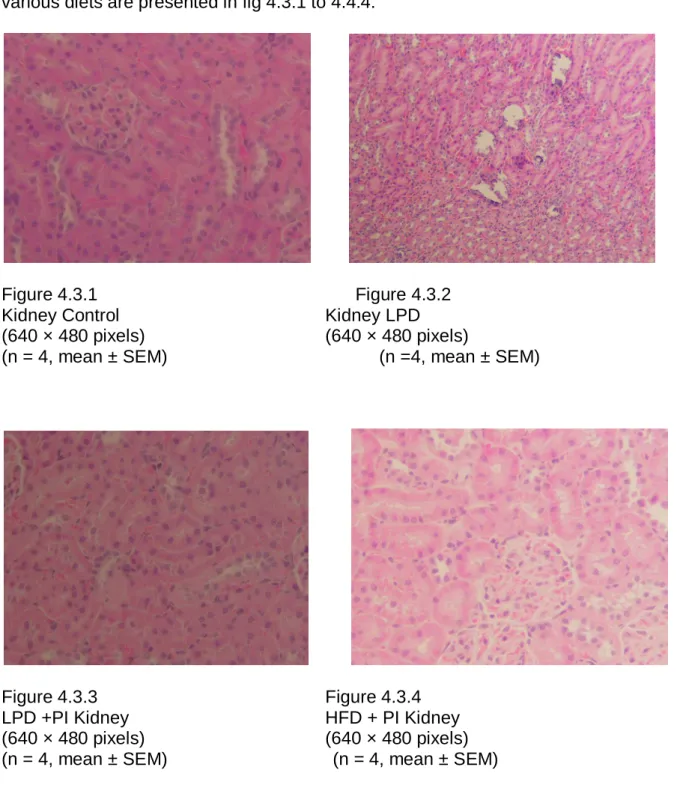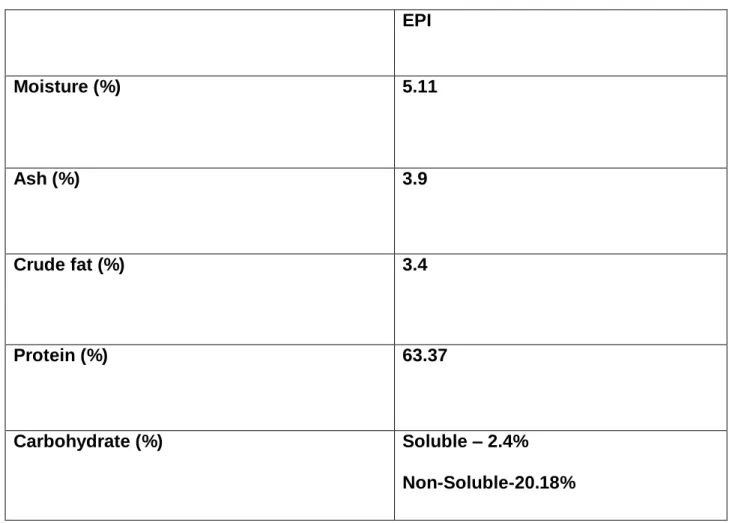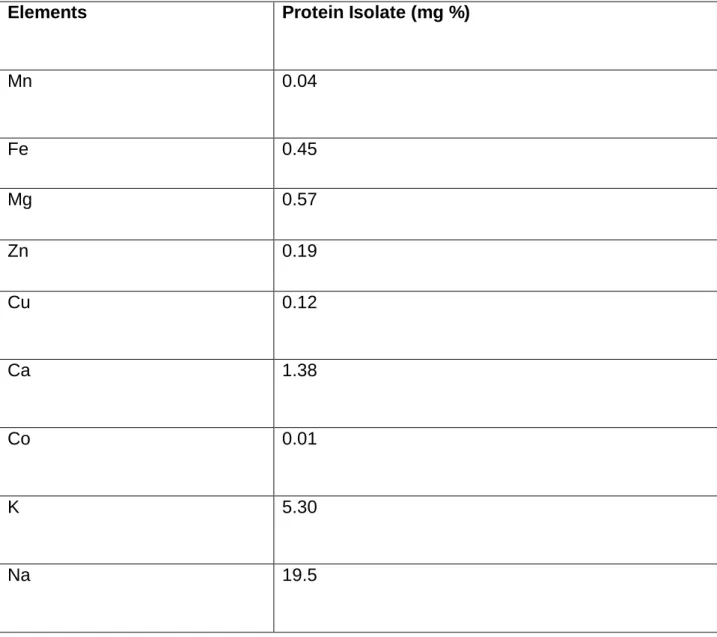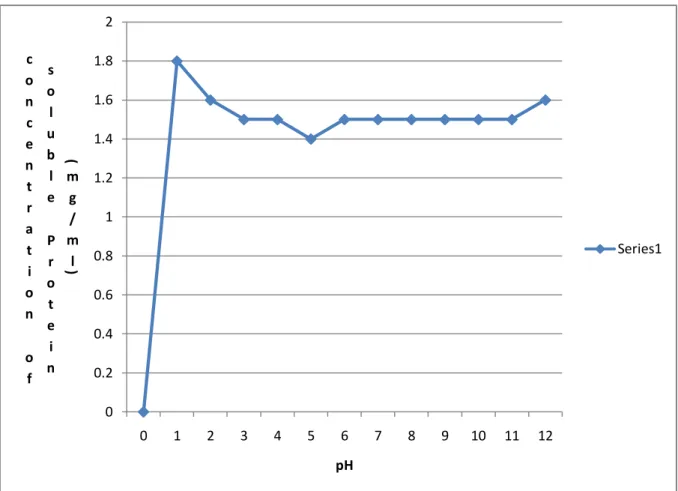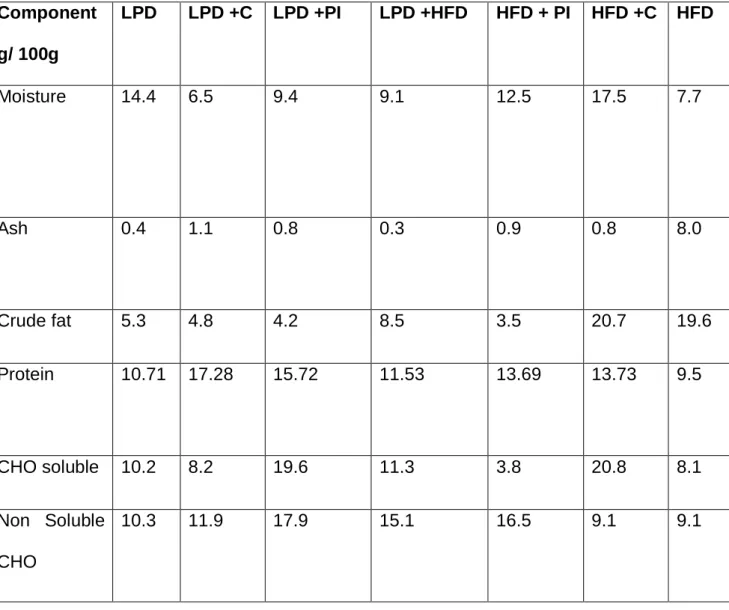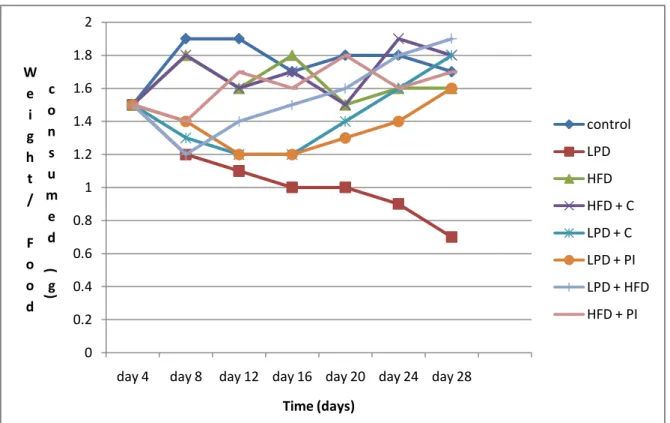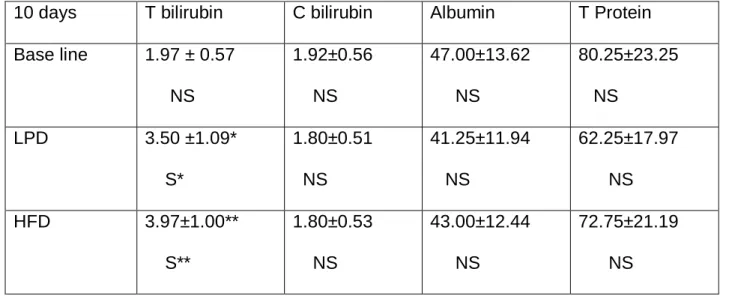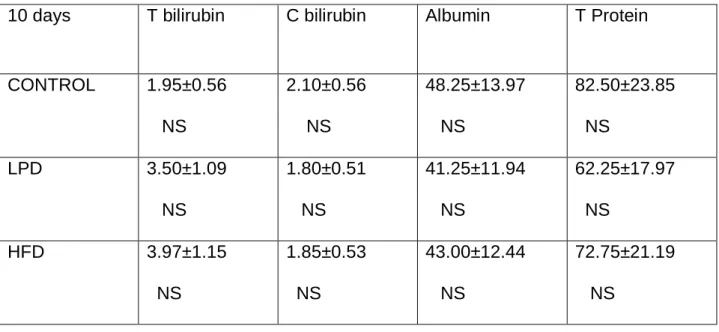EFFECTS OF CITRULUS LANATUS SEED (EGUSI) PROTEIN ISOLATE ON LIPID PEROXIDATION IN MALNORED RATS FED HIGH-FAT DIET. The thesis has been submitted to fulfill the requirements for the degree of Master of Science (MSc) with the approval of the undersigned. I would also like to appreciate the contribution of the following persons who contributed in one way or another for the success of this research.
The administration of the protein isolate (20% included in a low diet) to malnourished rats resulted in the alleviation of the deleterious effects associated with protein malnutrition. The variables examined were the serum enzymes (ALP, AST, ALT, GGT, LDH), serum lipids (cholesterol, TAG), haematological parameters (WBC, RBC, Hb, PCV, MCV, MCH, MCHC, RDW, platelets, neutrophils, monocytes, lymphocytes, LUC, eosinophils, basophils) and the histology of the liver and kidneys. Nutrition is the science of nutrition in relation to the nutrients and the health of the organism.
It is the study of the quality and quantity of nutrients derived from the food we eat in relation to proper functioning of the body and overall growth. According to Akinola et al (2010), protein malnutrition which is a common problem in children of the developed world occurs due to socio-economic reasons.
MALNUTRITION
PROTEIN ENERGY MALNUTRITION
- KWASHIORKOR
- MARASMUS
The presence of edema on both legs and the abdomen is due to the lack of a plasma protein, albumin, which maintains the osmotic pressure of the blood, so the liquid flows out of the blood and accumulates in the legs and abdomen. The accumulation of free radicals damages tissues and explains many of the characteristics of kwashiorkor - lightened or reddish hair. Essential fatty acid deficiency also contributes to many clinical problems associated with PEM, such as scaly dermatitis, hair loss, edema, fatty liver, impaired wound healing, susceptibility to infections, and growth retardation, etc.
Adding fats and oils increases the energy content of the food, but not by much. However, those who are highly sensitive to PEM cannot afford to have proteins of animal origin due to some or all of the following factors. Lack of knowledge: Ignoring the requirement of a growing child's dietary needs and inappropriate use of available resources.
Lohlum et al (2010) recommended that one of the least expensive ways to increase the level of protein in the diet of the low-income group is by encouraging the consumption of indigenous edible seeds, especially oilseeds and legumes. Many of the oil-producing plants contain a significant level (60-70%) of protein, which has great potential for use in the human diet.
CITRULLUS LANATUS (EGUSI MELON SEED)
According to Frankel (1995) Egusi is a rich source of flavonoids and phenol and thus will have the ability to scavenge free radicals and inhibit hydrolytic and inflammatory actions. Due to its rich source of phytochemicals, minerals and vitamins, it can also be a potential source of beneficial medicine (Adesanyaet al, 2011). Egusi is a relatively new crop despite the fact that many of these crops have ancient histories of contributing to food security (Willis et al 1989).
SCOPE
Material
Raw material
Methodology (See Appendix B for details)
- Preparation of Egusi seed Protein isolate
- Proximate Composition
- Moisture Determination
- Ash determination
- Crude fat determination
- Carbohydrate Determination
- Mineral analysis
- Functional properties
- Solubility
- pH determination
- Foam capacity
- Foam stability
- Water Absorption capacity
- Oil absorption capacity
- Bulk density
- Determination of amino acid composition
- Preparation of rat feeds
- Experimental animals
The details of the preparation of reagents and the detailed methodology are presented in Appendices A and B respectively. The residue (after centrifugation at 4500rpm, 30min) was discarded and the pH of the combined filtrate was adjusted to pH 5 with 18% HCl. Total soluble protein of the samples was determined by the method of Lowry et al (1951).
The ash of the sample (3.2.2.2) was dissolved in HCl and the mineral content was analyzed using a Carl Zeiss Jena AAS3 atomic absorption spectrophotometer (AOAC 1990). The nitrogen solubility of the isolated protein was determined by the method of Bera et al (1989). The pH of the protein isolate in the solution (2 g in 50 ml of distilled water) was determined with a pH meter.
The volume of the supernatant was measured and the decrease in volume was used to calculate the percentage of water absorbed. The amino acid composition of the hydrolyzate was determined using a Beckman 121MB amino acid analyzer (Fasuyi and Aletor, 2005).
LPD+C
LPD+PI
HFD+ C HFD+PI
Blood collection for enzyme assay, lipid analysis and liver and kidney histology
The animals were not fasted before sacrifice; they have access to water and food.
Blood analysis
Histology of liver and kidney
Statistical analysis
Protein isolate obtained from Egusi was analyzed for proximate composition, functional properties and amino acid composition. The biological value of the protein isolate was investigated by incorporating 20% (w/w) of the isolate into maize meal and feeding it to malnourished rats over 28 days. After the 28 days of feeding, the rats were sacrificed and the blood, liver and kidney were analyzed for biological parameters.
Proximate composition
Minerals composition
The functional properties
The protein solubility profile of the isolate shown in Figure 4.1 showed that, like all other proteins, solubility is pH dependent; the isoelectric point for the isolate is 5, indicating that the isolate is slightly acidic.
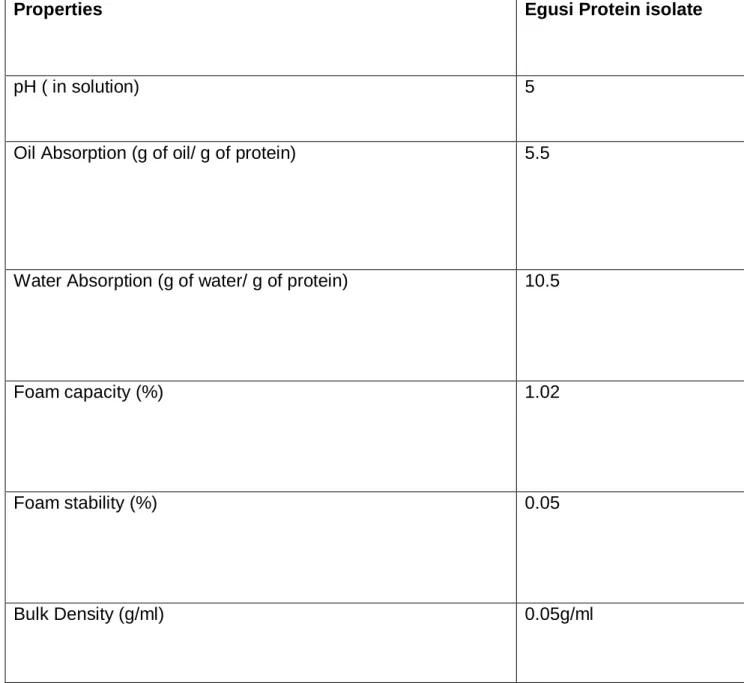
Amino acid composition
The proximate composition of the feeds shown in Table 4.6 indicates that the incorporation of the isolate into the various feeds increased the protein content of the feed to a noticeable level. The changes in body weight of rats fed different diets are shown in Figure 4.1. There is an indication that the rats fed the LPD lost weight and that there was an overall improvement (increase) in body weight when switched to the protein-enriched diet.
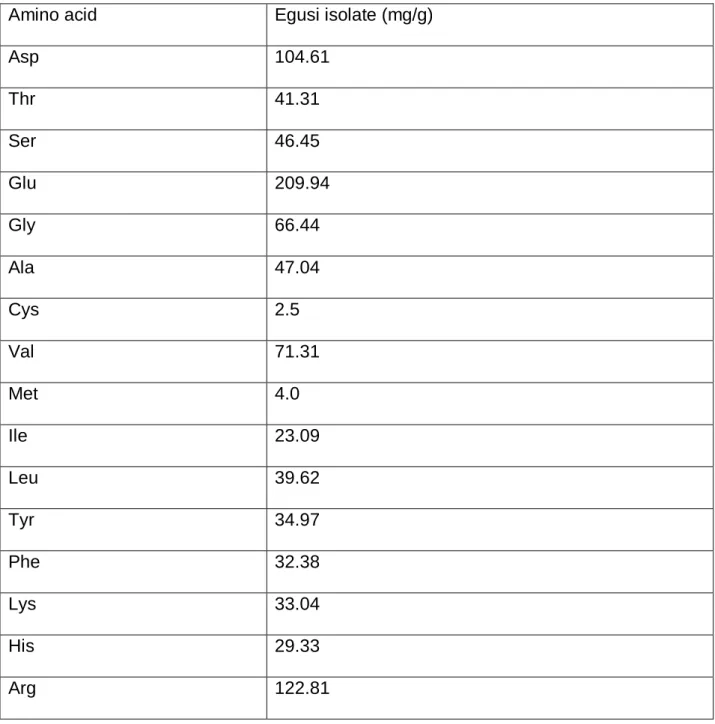
Effect of protein isolate on blood parameters
The results indicate a significant difference in Total bilirubin both in LPD and HFD, but no significant deviation was observed in the remaining parameters; the total protein in HFD was slightly higher. The control group consisted of the rats that remained on the normal rat feed, while the LPD and the HFD were the experimental groups.
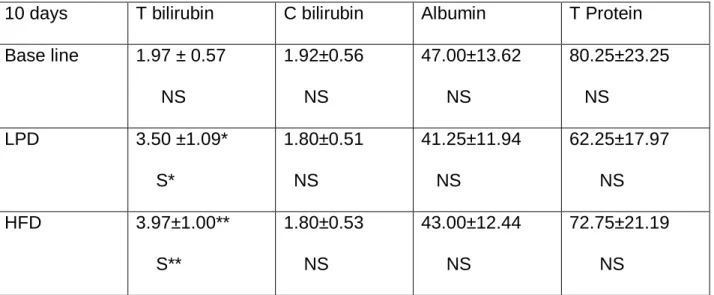
LPD + HFD group shows low concentration of triglycerides and urea and high concentration of creatine compared to control group. Although no significant difference was recorded, with administration of the protein (casein and EPI), there were detectable decreases in triglycerides and cholesterol; however, urea levels increased with both casein and EPI. It is clear that the general levels of the enzymes were not significantly affected by the feeding experiments.
However, it should be noted that after 10 days of feeding, there was a significant decrease in ALT in LPD rats (Table 4.11.2) compared to rats remaining on normal rat chow. A similar pattern was observed after a 28-day feeding trial (Table 4.11.3). However, an increase in the activity concentration of all enzymes was observed compared to the control, but after the administration of proteins (casein and EPI), the ALT concentration increased. , AST, ALP and GGT decreased, while the LDH concentration remained elevated. No significant difference was observed from baseline except for a slight decrease in MCHC with HFD and PC with LPD (Table 4.13.1).
The results obtained compared to the control (Table 4.13.2) were similar to those obtained for the baseline.
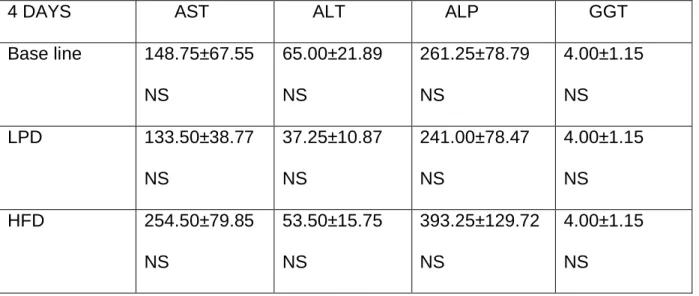
The serum concentration of MCV, Hb, EC and MCH decreased in the malnourished rat compared to the control group. Fed HFD shows low concentration in MCH, MHCH and RDW while EC and MCV increased in concentration. A significant difference was observed in LPD-fed mice with decreased concentration in neutrophils (NTP), monocytes (MC), eosinophils (ESP) and basophils (BP) while HFD-fed mice also.
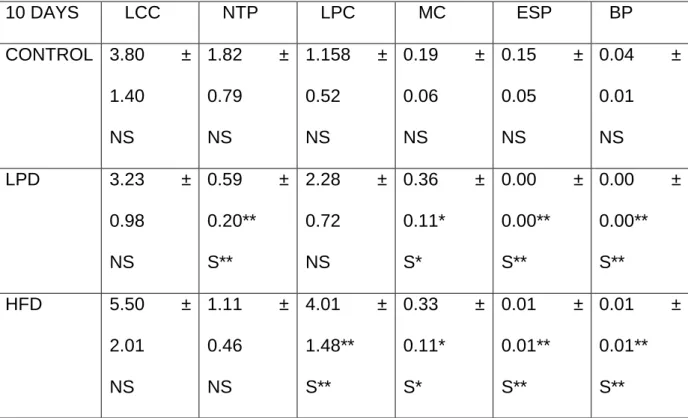
- The Microscopic examination of the liver and kidney
- Reagent
The protein content of the egusi isolate (63.4%) is relatively higher compared to 33.8% crude protein in the melon seeds (Ogbonna et al. 2009) and L. The analysis of the elements in the isolate shows a significant amount of the elements; the low levels of Co, Cu, Zn, Mn and Fe could be attributed to the loss in the extraction process. According to Osundahunsi et al., (2003), the ability of the isolate to absorb water and swell is desirable in food systems to improve yield and texture and add body to the food.
This then suggests that any formulation with insulation will have body and structure that would be desirable due to good water holding capacity. Proteins increase viscosity and facilitate the formulation of a cohesive multilayer protein film at the interface. The poor foaming properties of EPI mean that EPI would not be good for application in foods such as beverages, candies, sweets, cakes and coffee because they require proteins with relatively high foaming properties (Paul and Southgate 1980). The solubility profile of Egusi protein isolate is pH dependent, the isoelectric point of the isolate is between pH 5--7, above or below which the protein will precipitate.
The performance of rats fed EPI is an indicator of the biological quality of the protein. However, those fed LPD + PI and LPD + C gained weight, LPD + C was better because it was animal protein. The HFD-fed mice gained more weight than any other group when compared to the control group. Damaged liver cells during malnutrition are usually confirmed by liver AST and ALT tests.
Figueiras A, Freire – Garabal M. And Barros – Dios J. 1962). Contribution of hydrophobic bonds to protein conformational stability J. World Health Organization (2000). Reversing the tide of malnutrition, responding to the 21st century challenge. Geneva Switzerland W.H.O. Amino standard solution was prepared by dissolving their respective weight in 10% isopropanol solution to obtain a concentration of 0.02 M each of 0.02 M each amino acid.
A glass wool plug was placed at the mouth of the thimble and placed in a Soxhlet extractor. The weight gain of the flask was recorded as the amount of crude fat extracted. The mineral composition of the protein isolates was determined by the method of AOAC. g of the protein isolate ash was dissolved in 50 ml of 20%.
The spectrophotometer had an integrator built in, so it plotted all the standard curves and gave the corresponding concentration of the various metals in the ash solution of the protein isolates. The amount of sodium or potassium in the ash solution of the protein isolates was read from the standard curves.
